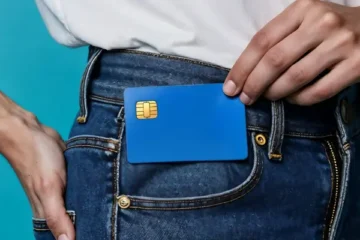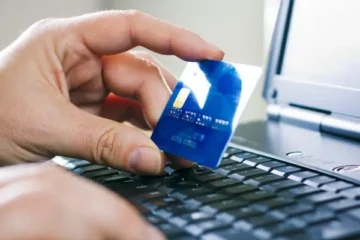Understanding credit cards: How to use them responsibly
In the US, credit cards are more than just a means of payment – they are a powerful tool for building credit, earning rewards and managing finances. However, if used carelessly, they can lead to high debt and problems with your FICO Score. If you want to enjoy the benefits without the risks, understanding the rules of the game is essential. This guide will teach you how to use your card wisely.
Advertisements
More than 70% of Americans have at least one card, but many still fall into traps such as accumulated interest and impulsive spending. Knowing how to control your limit, choose the best card brand and pay your bills on time makes all the difference. Want to find out how to use credit to your advantage? Keep reading and learn proven strategies to avoid common mistakes!
Advertisements
Whether it’s to build a history, earn miles or have security when shopping, a well-managed card opens doors. But where do you start? Here, you will find practical tips, from the first application to advanced use. Let’s turn your card into a financial ally – click ahead and master credit like a true expert!
What Is a Credit Card and How Does It Work?
In the U.S., a credit card is a revolving line of credit issued by banks (like Chase, Citi, or Amex). Unlike debit cards (which pull money directly from your account), credit cards let you borrow money up to a set limit – but you must repay it, ideally in full to avoid interest.
Advertisements
Your FICO Score (credit score) dictates your card eligibility and terms. Every action – on-time payments, credit utilization, account age – affects this score. Cards also come with an APR (Annual Percentage Rate), the interest charged if you carry a balance.
For example: If you spend1,000 andonlypay 900, the remaining $100 accrues interest (typically 15-25% annually). That’s why knowing terms like annual fees, late fees, and grace periods is key to smart credit use.
Benefits of having a credit card
A credit card isn’t just plastic—it’s a financial tool that can simplify your life when used correctly. From building credit to unlocking exclusive perks, here’s why millions of Americans rely on theirs daily.
Top advantages of credit cards:
- Build Credit History – Responsible use boosts your FICO Score, helping you qualify for loans, apartments, and better rates.
- Earn Rewards – Cashback, travel miles, and points turn everyday spending into savings (e.g., 2-5% back on groceries, gas, or dining).
- Fraud Protection – $0 liability for unauthorized charges, unlike debit cards linked directly to your bank account.
- Purchase Protections – Many cards offer extended warranties, price protection, and return guarantees.
- Emergency Safety Net – Useful for unexpected expenses (just pay the balance ASAP to avoid interest).
- Travel Perks – Free checked bags, airport lounge access, and travel insurance with premium cards.
Credit Card risks and how to avoid debt
While credit cards provide financial flexibility, they carry substantial risks that require careful management.

Key risks:
- High Interest Rates: APRs (typically 15-25%) can rapidly inflate outstanding balances
- Minimum Payment Trap: Making only minimum payments extends repayment timelines dramatically
- Impulse Purchases: Easy spending access can undermine budget discipline
- Hidden Fees: Annual charges, late penalties, and foreign transaction fees increase costs
Prevention strategies:
- Pay your balance in full each month – Avoid interest charges completely
- Track spending diligently – Use digital tools to monitor transactions
- Keep utilization under 30% – Protects your credit rating
- Avoid cash advances – These carry higher rates and immediate interest
- Enable account alerts – For payment due dates and spending thresholds
- Limit the number of cards – Simplifies financial management
- Request better terms – Contact issuers about rate reductions
How to choose the best credit card
Selecting the right credit card requires matching card features to your financial profile. Here’s a detailed comparison:
1. Credit Builder Cards
- Best for: Those with limited/no credit history
- Examples: Capital One Platinum, Discover it® Secured
- Key Features:
- Easier approval (some with no credit check)
- Reports to all three credit bureaus
- Lower credit limits (300−1,000)
- Considerations:
- Possible annual fees
- Minimal rewards
2. Cashback Cards
- Best for: Everyday spending
- Examples: Chase Freedom Unlimited®, Citi® Double Cash
- Key Features:
- 1-5% back on purchases
- Sign-up bonuses (up to $200)
- Flexible redemption
- Considerations:
- High APR if carrying balances
- Requires good credit (670+)
3. Travel Cards
- Best for: Frequent travelers
- Examples: Chase Sapphire Preferred®, Capital One Venture
- Key Features:
- Transferable points/miles
- Airport lounge access
- Travel insurance
- Considerations:
- Annual fees (95−550)
- Excellent credit needed (700+)
4. Balance Transfer Cards
- Best for: Debt consolidation
- Examples: Citi Simplicity®, BankAmericard®
- Key Features:
- 0% intro APR (12-21 months)
- 3-5% transfer fee
- Considerations:
- High post-promo APR
- Transfer limits apply
5. Premium Cards
- Best for: High-income users
- Examples: Amex Platinum, Chase Sapphire Reserve
- Key Features:
- Annual travel credits
- Exclusive event access
- Concierge service
- Considerations:
- $550+ annual fees
- Strict income requirements
Making your credit card work for you
Used wisely, a credit card can be one of your most powerful credit-building and money-saving tools. But as we’ve covered, this requires discipline, knowledge, and strategy.
Key Takeaways:
- Spend within your means – Never charge more than you can repay monthly
- Pay in full – Avoid interest and unnecessary debt
- Pick the right card – Match rewards to your spending habits
- Monitor your credit – Regularly check your FICO Score and reports
- Leverage perks – Cashback, travel benefits, and purchase protections add real value
Your Action Plan:
- If you’re new to credit: Start with a secured or student card
- If you have established credit: Optimize spending to maximize rewards
- If you’re carrying debt: Stop using cards and focus on a payoff plan
Remember: A credit card isn’t free money – it’s a financial tool that, when managed well, can create opportunities for better loans, lower rates, and valuable perks.





